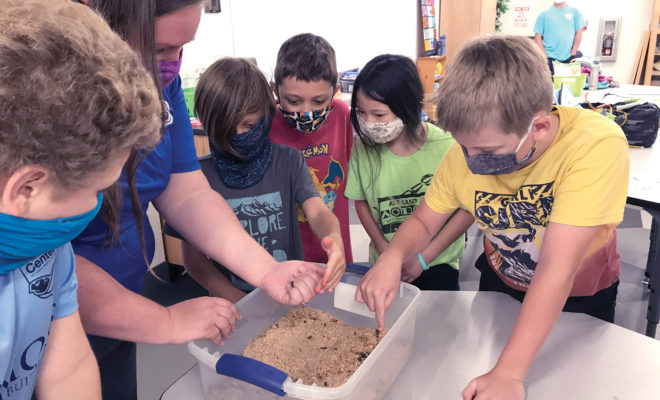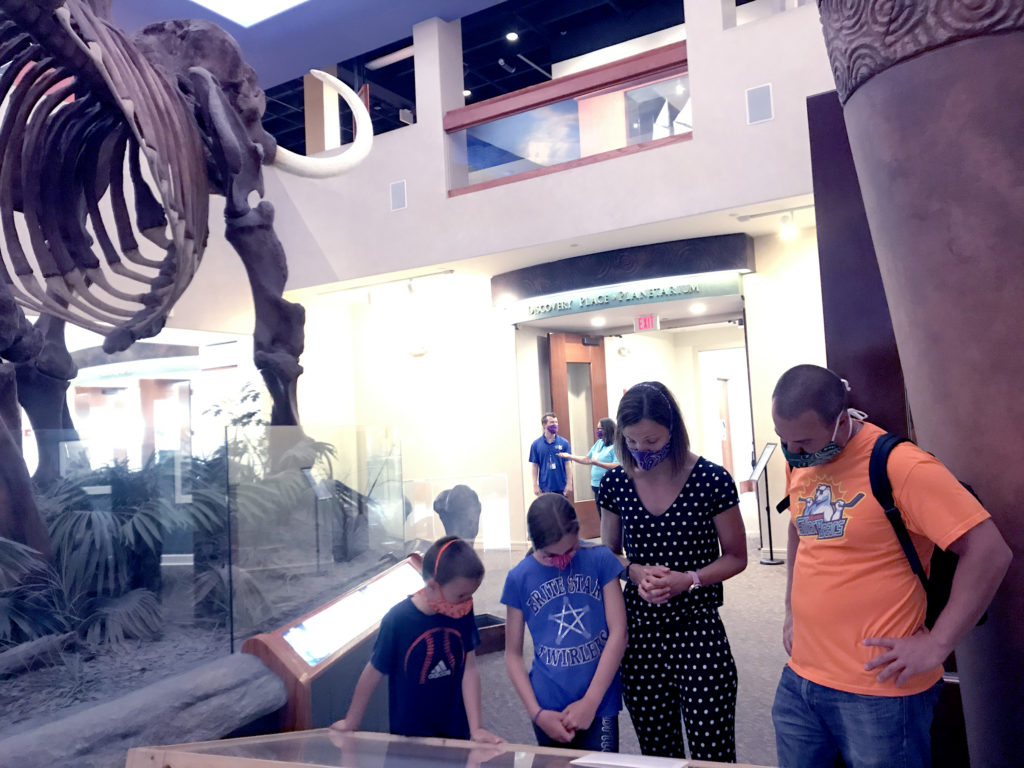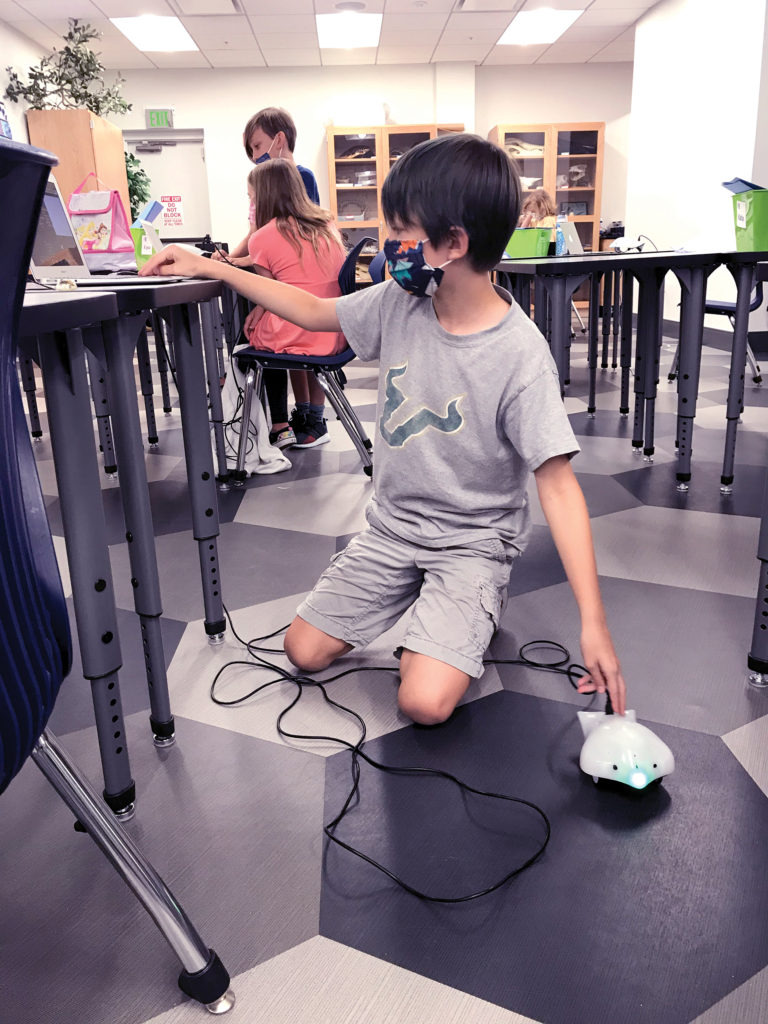
Education
Education Matters: Finding Pathways at The Bishop
By Ryan G. Van Cleave
September 1, 2020
In a time where few people are leaving home for anything except work and school, The Bishop is still creating new ways to engage the public in general, and young people in specific, because the value of what the museum offers is so significant. The Bishop Museum of Science and Nature’s Director of Education, Tish Sacks, explains this further by saying, “Museums help us connect learning to the real world—moving beyond paper and pencil to the natural environment and the universe. We provide a way for students and teachers to place their learning in a context where students can have that AHA moment—‘Now I see why this matters.’”

As someone who has an annual membership at The Bishop, I’ve had my own share of AHA moments whether it’s looking at Clyde Butcher’s black-and-white photos of wildlife on and around the Myakka River, seeing the “Giants, Dragons, & Unicorns” traveling exhibit last year, or getting a sense of what Florida looked like three million years ago from the land of change gallery. Quite simply, The Bishop is full of AHA-worthy moments.
To answer one big question, yes—they’re still open. The times, though, are different than normal, so check before swinging by. Or better yet, buy tickets online to ensure they have the capacity to meet your needs. They’ve adjusted their standard admission pricing, too, which makes your visit—groups no larger than 10, please!—even more financially feasible than normal.
Yes, the planetarium shows are now shorter, and they allow a max of 30 in that space built for 118. People wear masks as they use the one-way paths and adhere to social distancing guidelines. There are no live manatee presentations to keep people from gathering in large groups in a single spot. But that doesn’t mean The Bishop isn’t offering a lot to its many visitors, patrons, and fans.
To help students find their own AHAs in these COVID-fraught times, Sacks reports that “we are planning for a range of options, keeping an eye on the emerging needs of teachers and students. This includes virtual and video offerings, outreaches, and field trip programs in a modified format for small groups. We are also looking at ways to modify the slate of early learning offerings we developed last year.”

Fundamentally, she notes, their approach to early learning remains the same—that the most important early learning begins with adults joining their children in a process of inquiry and discovery that engages all the senses. “Since COVID, we have been trying to provide as many online tools as we can to assist parents as well as teachers to pursue learning in a fun but safe way,” Sacks says. “We also recognize the challenges that families and schools in underserved communities face when finding resources to support their early learners, so we have been focusing a lot on making these resources as accessible as possible. This means continuing our partnership with the Soar in 4 Manatee community and our participation in Museums for All.”
What’s perhaps most exciting about The Bishop is their free Pathways phone app. I’ve got it on my iPhone XR. If you want virtual tours? No problem. There’s the 15-minute “No Shoes, No Chert, No Problems” tour, “Water Adventures!” at 20 minutes, and the hour-long 4th-grade tour which was added in April to replace a longstanding free field trip opportunity The Bishop created to support 4th grade science benchmarks. “We modified an existing program and added companion materials that could be downloaded by students and teachers,” explains Sacks.
Did I mention how the app not only helps people with virtual and in-person tours, but that an AR (augmented reality) camera feature allows deeper interaction with certain exhibits, as well? How terrific is that?
Martha Wells, Chief Community Engagement Officer at The Bishop, adds that the app helps people connect different things in the museum in ways they might not on their own, such as showing how mastodons and manatees are related. Or you’ll simply discover things you didn’t know, like how giant sloths roamed Florida at one point. Who knew? (Well, I did, but that’s because I have the app.)

Wells has been with The Bishop for nearly a decade, and while these are trying times, she’s excited about all the museum is doing to keep people involved. That spirit of eagerness and meeting the needs of the community has been there from the start. “We’re really evolving. We’re developing this concept of deep engagement—not just being a place of things, but of experiences.” For her and others who work there, the physical space is just one important level. It also serves as a canvas upon which other experiences can be built.
“We’re all about the positive, interactive museum experience,” says Wells. “Our entire approach to education is to make things engaging—to help others find the joy of discovery. Everyone pretty much has what they need when they walk in the door. Questions that need answering, and things they enjoy. We’re doing all we can to take it from there.”
For those who think you’ve been to The Bishop before—a been-there-done-that mentality—Wells notes that there are plenty of new things to see. “I moved here from Chicago. I’ve worked at the Shedd Aquarium, the Adler Planetarium, the Brookfield Zoo, and elsewhere—those are all amazing places. But The Bishop has been here for more than seventy years. It was started by members of the community who felt history was important, and that commitment is part of our DNA. This is an incredible place, and it keeps getting better.”
FOR MORE INFORMATION about The Bishop or their educational offerings, please visit www.bishopscience.org or call 941.746.4131.



You must be logged in to post a comment Login